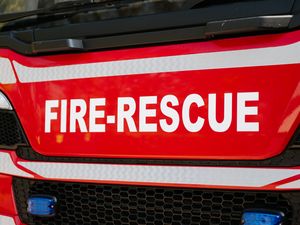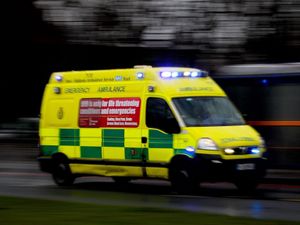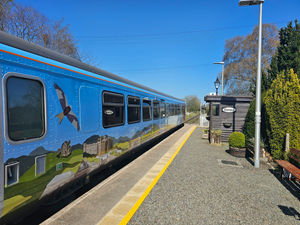Shropshire doctor who is still haunted by King's Cross fire
The acrid smell, the thick smoke. Dr Martin Deahl can vividly remember the scene like it were yesterday.
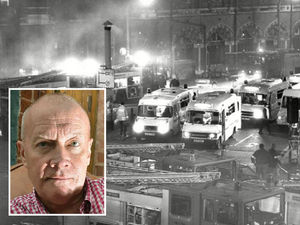
"The Coronation Street credits were rolling when we first smelled the smoke," says Dr Deahl, who now lives in Newport.
"Surely it wasn't our house burning. A neighbour's perhaps? No, the smell was too pungent for an ordinary fire, and the clouds of smoke outside were too thick. On the streets the crowds were gathering and we were drawn together to the source of the flames."
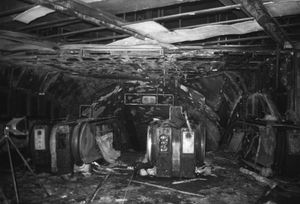
The source of the flames was the escalator from the underground station at King's Cross, in what was one of the worst disasters of the 20th century.
Dr Deahl, then a 31-year-old medic doing psychiatric training at the renowned Maudsley Hospital in south London, and his colleague Paolo Domizi found themselves the first doctors on the scene.
The fire, on November 18, 1987, claimed 31 lives, and left many more with severe burns or smoke inhalation problems.
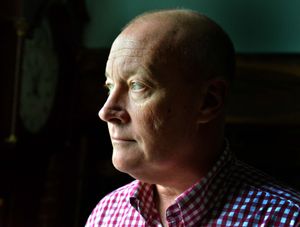
"The horror was evident right from the start," says Dr Deahl.
"A policeman told us to clear off, we said we were doctors and offered to help.
"There was a fireman, he said, by St Pancras steps. He said he'd just been brought up and was in a bad way."
The fireman in question was station officer Colin Townsley, who was in charge of the first pump to arrive at the fire. It is thought he had spotted a woman in trouble and had gone to help her.
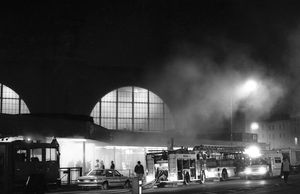
"He was on the ground lifeless, amidst a mass of cables and hosepipes," says Dr Deahl.
"Two others doctors were there, passers by like us, giving cardiac massage."
Tragically, it was too late, and Mr Townsley, a 45-year-old father-of-two who had served with the fire service for 23 years, was one of the 31 who perished.
More firefighters emerged from the thick smoke, staggering, confused and exhausted.
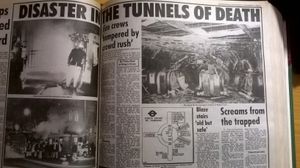
Dr Deahl recalls them telling how they were falling over bodies.
"They'd seen a lot of fires, but never anything quite like this. One man collapsed, we helped him into the ambulance quickly.
"Oxygen mask on, tunic off, the heat poured off his beetroot flesh like steam from a boiling kettle. Burned certainly, pneumonitis possibly, but he would be all right. Others lay exhausted on the floor, faces blackened with soot, relieved to be out of the terrible heat."
By this time a group of doctors and nurses had gathered, waiting for a casualty they would actually be able to help. The smoke continued to billow out, and more firefighters disappeared down the tunnel. At 9pm the first of the official medical team arrived, a GP with all the appropriate equipment.
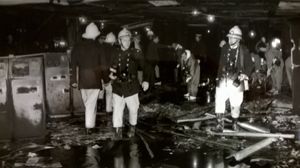
"We couldn't help thinking he had arrived too late," he says.
"And then the first of the bodies came, leading to the grim procession to be, shrouded in red and black rubbish bags and ambulance blankets."
More official-looking doctors arrived, more police officers and firefighters. The devastated chairman of London Transport, Sir John Bright, and transport secretary Paul Channon also appeared, as the bodies continued to emerge.
Dr Deahl and his fellow volunteers were sent to the concourse of the main station to certify the bodies, and he remembers how eerie it felt to see the station deserted.
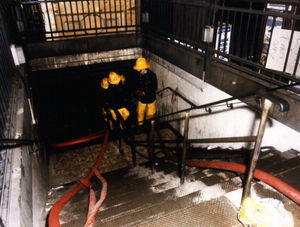
"Another body came out of the blackness, unrecognisable. The travel card survived intact – it was a man."
The solemn quietness at the station was interrupted by the sound of a female voice announcing the 10.15pm service to Royston.
"Suddenly, someone shouted for a doctor in the tunnel," says Dr Deahl.
"It was dark down there, and the dust and smoke were choking. Pools of water and debris everywhere.
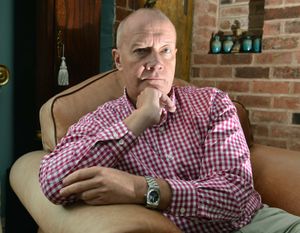
"A young man was being dragged onto a stretcher by firemen."
Dr Deahl was told that the young man might be alive, but it was impossible to tell in the darkness and chaos. A heart monitor showed he was dead.
"How impotent, how hopeless and desperate we felt then. We were used to death and dying, but this was all too much."
A thorough bath afterwards was not enough to remove the strong, pungent smell from his body, and the memories of the night have left an indelible impression on him.
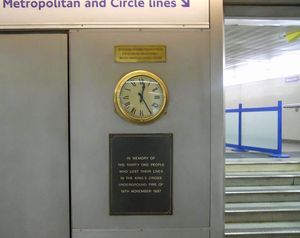
"I went down to London for a conference last month, and it all came back to me," he says.
"I can remember where every dead body lay, exactly where each one of them was."
He says while he has suffered no ill effects from the tragedy, he still feels slight palpitations when reminded of it.
It was an experience that would have a big impact on Dr Deahl's career path, leading him to carry out extensive work in the field of post traumatic stress.
He remembers the underground train driver who defied orders not to stop at stricken station so that he could rescue passengers who were trapped beneath the ground.
"They told him not to stop at King's Cross, but he saved about 200 people on that train," he says.
"He had a terrible time because he disobeyed orders, and London Transport tried to sack him."
In the aftermath of the disaster, divisional officer Gerry O'Neill said many lives might have been saved if people had fought their natural instincts to escape the underground tunnels. He said many of the passengers would have escaped the choking smoke had they remained below ground rather than trying to fight their way to the surface.
The investigations that followed later revealed the fire was probably caused by a match being discarded by a smoker on the wooden escalator out of the station.
Just as with Grenfell Tower today, the recriminations were swift. London Transport had vehemently denied that its wooden escalators were unsafe, but was criticised by the subsequent inquiry for a complacent attitude towards fire.
The inquiry was told how underground fires were described as "smouldering", and staff were expected to deal with underground blazes themselves, only calling the fire brigade if they were out of control.
"Hindsight is a great thing," says Dr Deahl. "It's natural for people to want to find a cause for something, but it won't bring back the dead.
"If you think back 30 years, everybody was smoking indoors, and it was the first real disaster for many years. They just weren't prepared for it."


